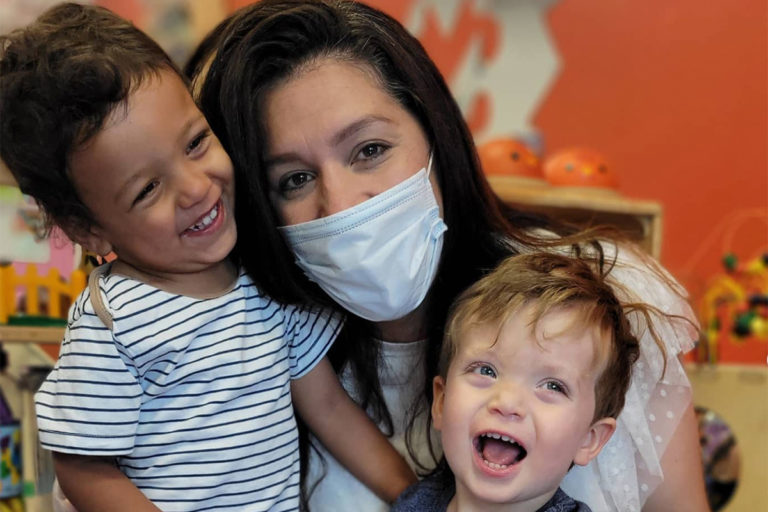What is Brain-Based Learning?
What is brain-based learning? You might have heard of schools adopting this method, but is it helpful to students? We have everything you need to know about this teaching method below!
Brain-Based Learning Defined
Brain-based learning is a paradigm that relies on school programs, lesson designs, and teaching methods created through neuroscience and the latest scientific studies. Its main focus is to facilitate efficient and speedy learning.
The brain-based learning method primarily revolves around crucial changes that occur in the brain while learning is underway, otherwise known as neuroplasticity.
Principle of Brain-Based Learning
Below are several key principles that will help you formulate a more comprehensive answer to the question, what is brain-based learning? Each significantly influences the brain’s ability to learn and function optimally.
Health and Exercise
Exercise optimizes a learner’s mindset and boosts attention, motivation, and alertness. Plus, it improves information retention by encouraging nerve cells to bind. That is why, during brain-based learning, teachers allow students to engage in immersive activities like moving and learning simultaneously.
Positive Emotions
Emotions determine a student’s level of motivation, gratification, and mindfulness. That is why teachers who rely on brain-based learning try to cultivate feelings of joy, pride, interest, and hope. Also, they do everything possible to stave off negative emotions such as boredom, anxiety, and fear.

Group Work
Students that work in groups learn cooperation. The activity also teaches them to compromise and embrace shared perspectives. Group work helps learners pool skills and knowledge, which comes in handy when a complex problem is in play.
Peer Teaching
As the name suggests, peer teaching is a scenario where students learn from their peers. It’s often engaging and interactive because learners respond differently to people in their age group than to adult teachers. In addition, it fosters confidence and sharpens peer teachers’ skills.
Practice
Brain-based learning prioritizes practice because it improves students’ ability to remember new information. Plus, it helps them set reasonable goals and expectations through evident progress. Also, students who practice regularly have improved automaticity, meaning they can apply knowledge speedier without reflection.
Limited Lectures
Brain-based learning limits lectures, which are often passive and bar teachers from gauging if students are intellectually engaging with materials. On the contrary, the brain-based method makes learning fun and more effective through peer teaching, regular exercise breaks, and much more.
Meaningful Information
Unlike conventional teaching methods, which introduce students to formulaic knowledge, brain-based learning focuses on meaningful information. That means this method ensures learners have vital cognitive skills they can use to facilitate day-to-day life.
Written and Verbal Information
Writing enables students to stockpile information and learn more. On the other hand, verbal information helps them learn how to express needs, communicate with others, and describe events. If you combine the two, the outcome should be learners who can quickly understand and deliver accurate information.
Benefits of Brain-Based Learning
Now that we’ve helped you map out an informed answer to the question ‘what is brain-based learning,’ you can safely proceed to the next query. That is whether or not brain-based learning is worth it.
Below are a couple of the must-know benefits of brain-based learning.
- Brain-based learning improves memory and retention.
- Students engaged in brain-based learning develop better psyches through positive affirmations.
- Brain-based learning prioritizes exercise, enabling students to be in good physical and mental shape.
- Learners who lean towards the arts reap heavily from brain-based learning through enhanced focus and creativity.
- Through brain-based learning, students hone emotional intelligence and gain coping skills that help them face life’s challenges.
- Brain-based learning supports learners and encourages prosocial behaviors like cooperation and sharing.
Brain-Based Learning; Classroom Application
As a concerned parent or guardian, you want your kid to have the skills they need to succeed. That is why you are determined to find out what brain-based learning is and why it is necessary. Most importantly, your determination makes you wonder how teachers apply brain-based learning.
Simply put, brain-based learning has varied applications. For instance, a teacher may establish “brain breaks,” where students can move around the classroom and discuss what they’ve learned with their classmates.
Moreover, a teacher relying on the principles of brain-based learning can use real-life issues to model teaching. For instance, they may cherry-pick topics from the news or give students assignments centered on real, tangible problems like international conflicts.
Spanish Immersion Early Learning Programs
Your child’s first educational experiences determine their success later in life. At Casa de Corazón we know that! That is why our institution provides the best educational childcare service in MN and Shorewood, WI, through an outstanding Spanish immersion curriculum.
If you’d like to learn more, visit our website, and request a tour today. We look forward to hearing from you.



